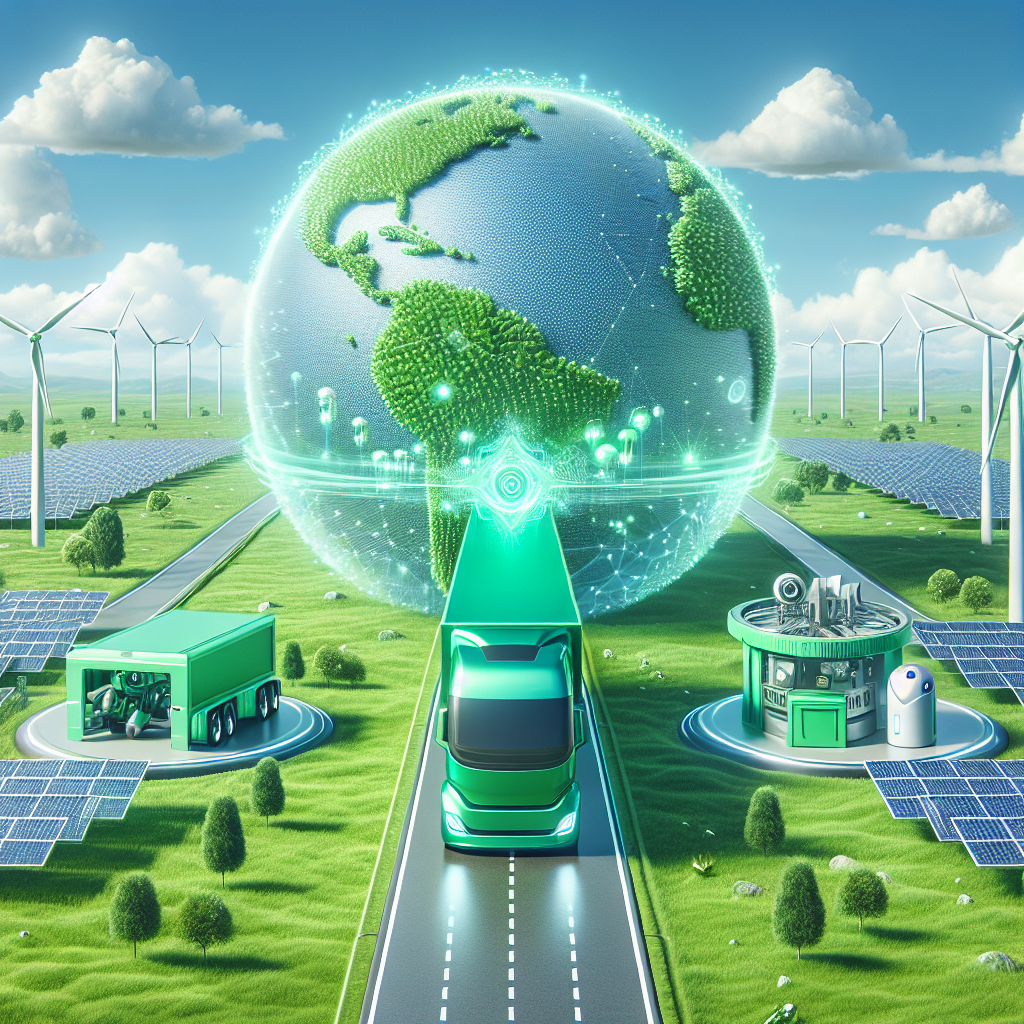In recent years, the transportation industry has been undergoing a significant transformation, driven by the need for sustainable solutions to reduce carbon emissions and mitigate the impact of climate change. One of the key technologies driving this transformation is artificial intelligence (AI), which is being leveraged to optimize transportation systems and enable green logistics solutions. In this article, we will explore how AI is being used to improve sustainable transportation and green logistics, as well as some frequently asked questions about this topic.
AI in Sustainable Transportation
AI is being used in various ways to make transportation more sustainable. One of the key applications of AI in this field is in the optimization of transportation systems. AI algorithms can analyze vast amounts of data to optimize routes, schedules, and vehicle utilization, leading to more efficient transportation systems that reduce fuel consumption and emissions.
For example, AI-powered route optimization algorithms can take into account traffic patterns, weather conditions, and other factors to find the most efficient route for a vehicle. This not only reduces fuel consumption but also helps to reduce congestion and improve overall transportation efficiency.
AI is also being used to improve the efficiency of public transportation systems. By analyzing data on passenger demand, AI algorithms can optimize bus and train schedules to better match supply with demand, reducing waiting times and improving the overall passenger experience. This not only encourages more people to use public transportation but also helps to reduce the number of cars on the road, further reducing emissions.
Another way AI is being used to make transportation more sustainable is through the development of autonomous vehicles. AI-powered self-driving cars and trucks have the potential to revolutionize the transportation industry by reducing the need for human drivers, improving road safety, and reducing fuel consumption. Autonomous vehicles can also be optimized to drive more efficiently, further reducing emissions and fuel consumption.
AI in Green Logistics Solutions
In addition to improving transportation systems, AI is also being used to optimize logistics operations and reduce the environmental impact of the supply chain. Green logistics solutions aim to minimize the carbon footprint of transporting goods by optimizing routes, reducing empty miles, and promoting the use of environmentally friendly modes of transportation.
AI algorithms can analyze data on shipping routes, transportation modes, and delivery schedules to optimize logistics operations and reduce emissions. For example, AI-powered logistics platforms can consolidate shipments, optimize delivery routes, and reduce idle time, leading to more efficient and environmentally friendly supply chain operations.
AI is also being used to promote the use of sustainable transportation modes, such as electric vehicles and bicycles, in logistics operations. By analyzing data on vehicle performance, charging infrastructure, and delivery requirements, AI algorithms can help companies transition to greener transportation options and reduce their carbon footprint.
FAQs
Q: How can AI help reduce emissions in the transportation industry?
A: AI can help reduce emissions in the transportation industry by optimizing routes, schedules, and vehicle utilization to minimize fuel consumption. AI-powered algorithms can also promote the use of sustainable transportation modes, such as electric vehicles, to further reduce emissions.
Q: What are some examples of AI applications in sustainable transportation?
A: Some examples of AI applications in sustainable transportation include route optimization algorithms, autonomous vehicles, and public transportation optimization systems. These technologies are helping to make transportation more efficient and environmentally friendly.
Q: How can AI improve logistics operations to reduce the carbon footprint of the supply chain?
A: AI can improve logistics operations by optimizing routes, consolidating shipments, and promoting the use of sustainable transportation modes. By analyzing data on shipping routes, transportation modes, and delivery schedules, AI algorithms can help companies reduce their carbon footprint and minimize the environmental impact of the supply chain.
Q: What are some challenges in leveraging AI for sustainable transportation and green logistics solutions?
A: Some challenges in leveraging AI for sustainable transportation and green logistics solutions include data privacy concerns, regulatory hurdles, and the high cost of implementing AI technologies. Additionally, there may be resistance to change from traditional transportation and logistics companies. However, the benefits of using AI for sustainability far outweigh these challenges.
In conclusion, AI is playing a crucial role in transforming the transportation industry and promoting sustainability. By optimizing transportation systems, improving logistics operations, and promoting the use of green transportation modes, AI is helping to reduce emissions, mitigate climate change, and create a more sustainable future. As AI technologies continue to advance, we can expect to see even greater innovations in sustainable transportation and green logistics solutions in the years to come.

